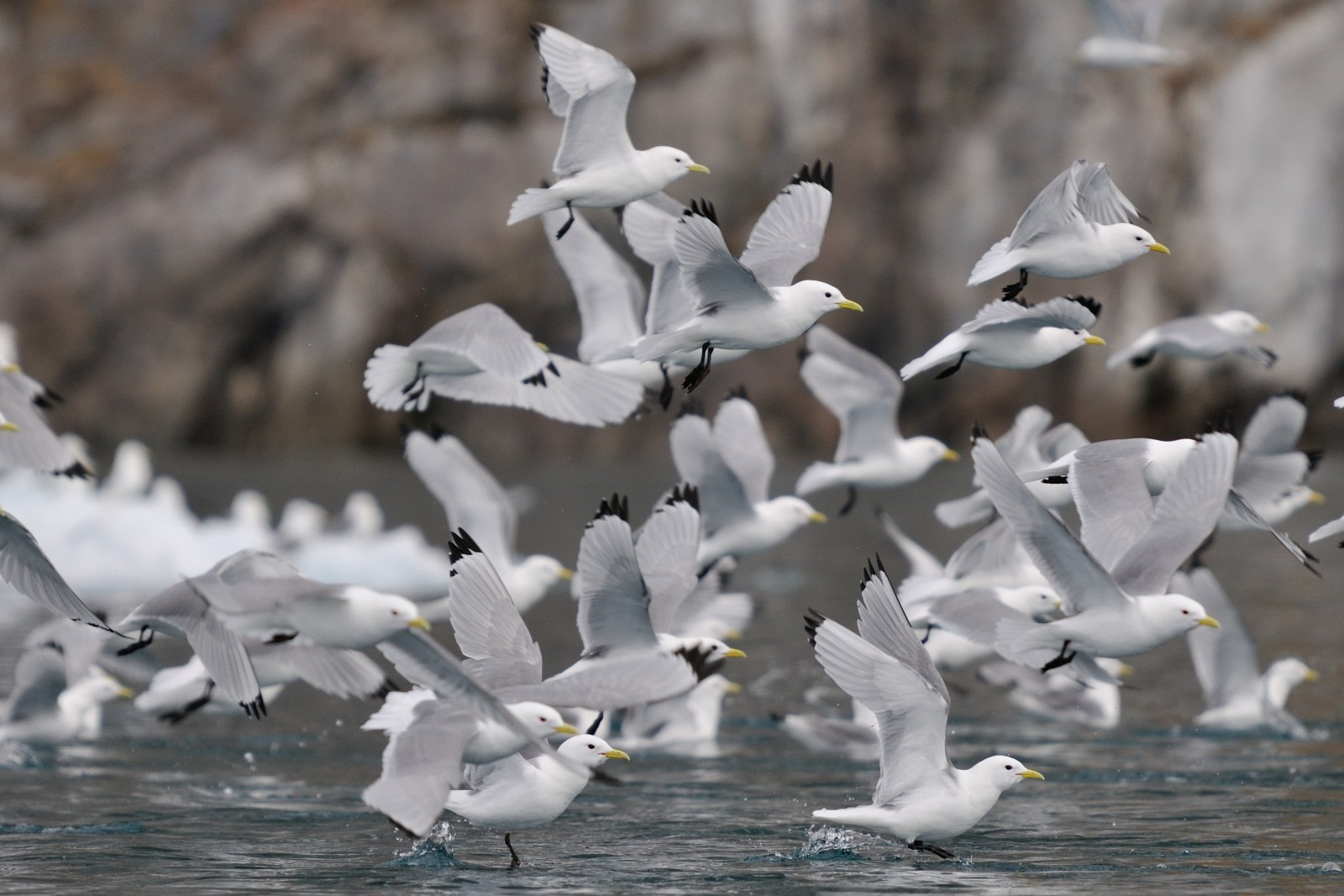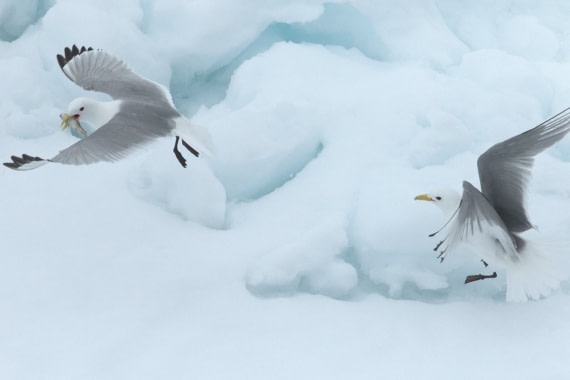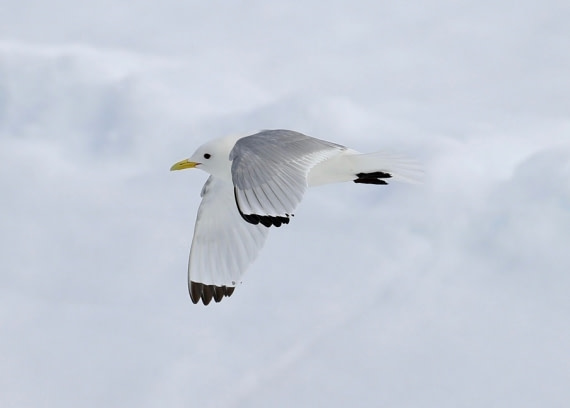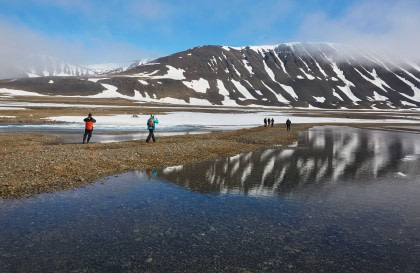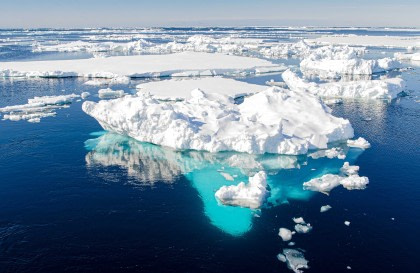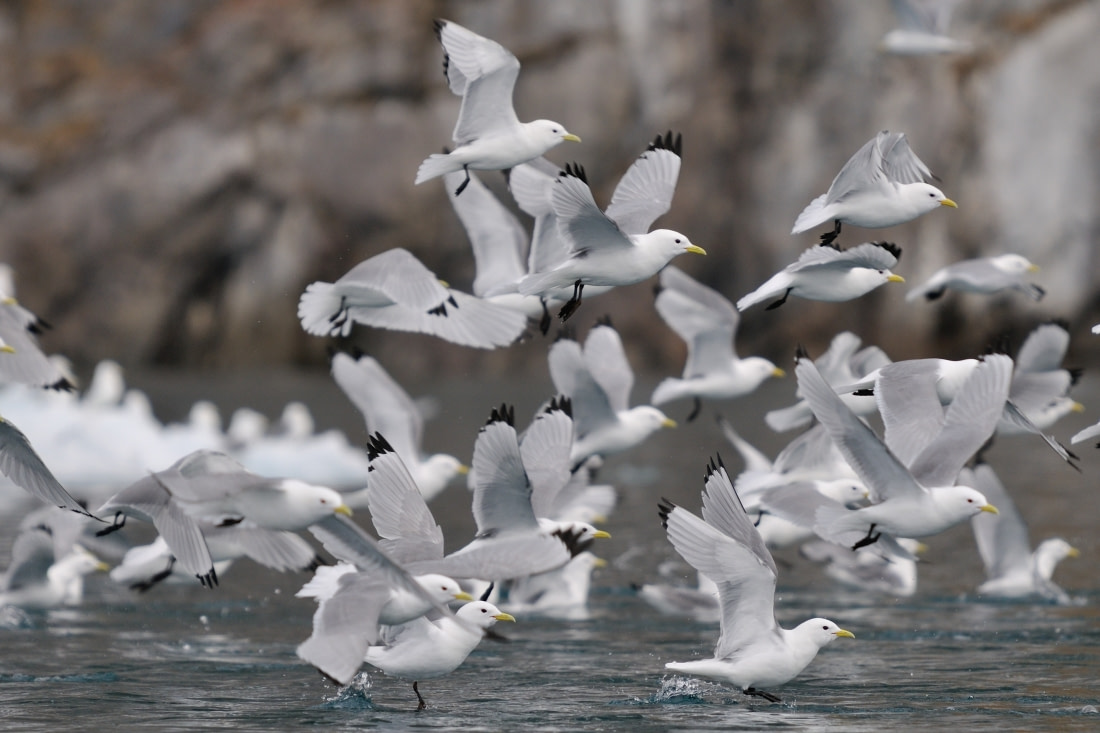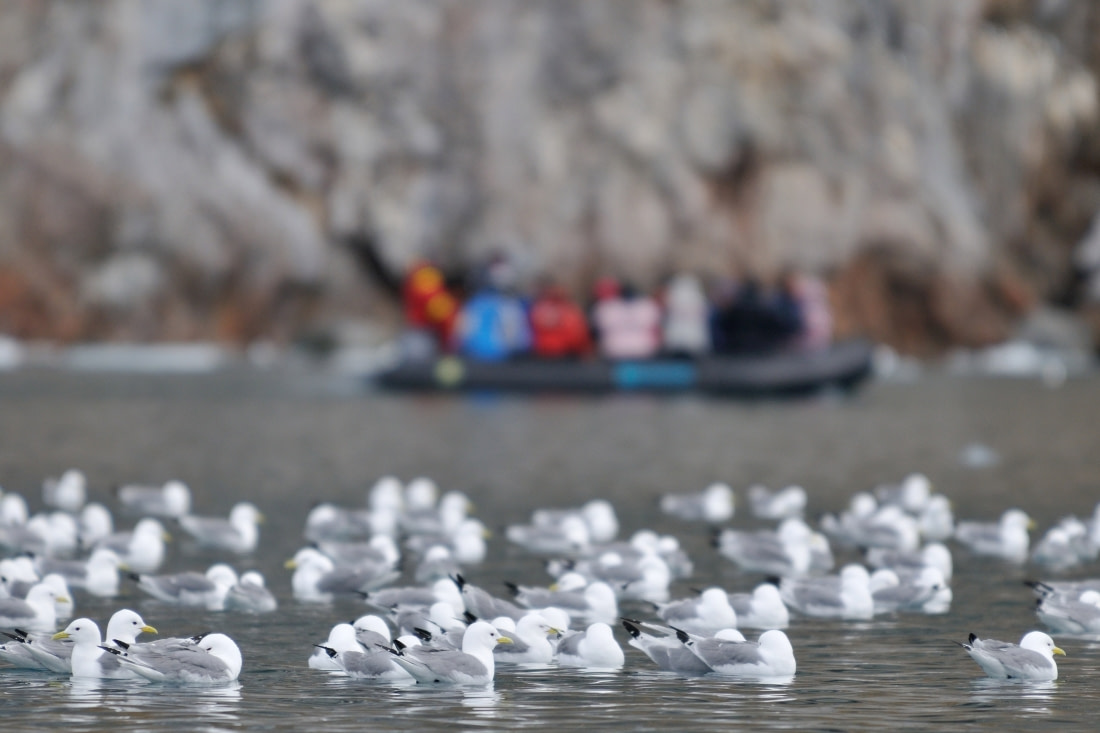Name: Kittiwake (Rissa)
- Black-Legged Kittiwake (Rissa tridactyla)
Height: 40 cm.
Weight: 300-525g.
Location: Northern Ocean Regions.
Conservation status: Least Concern.
Diet: Fish, marine invertebrates.
Appearance: White head and body, grey wings, yellow bill. Gull-like.
How do Kittiwakes feed?
Kittiwakes hunt in flocks during the daytime, floating on the water and dipping their heads in to catch fish, or making the occasional shallow dive. Unlike other types of Gulls they do not tend to feed at garbage dumps, preferring to feed far out in the oceans. They will however follow ships in an attempt to scavenge from their refuse.
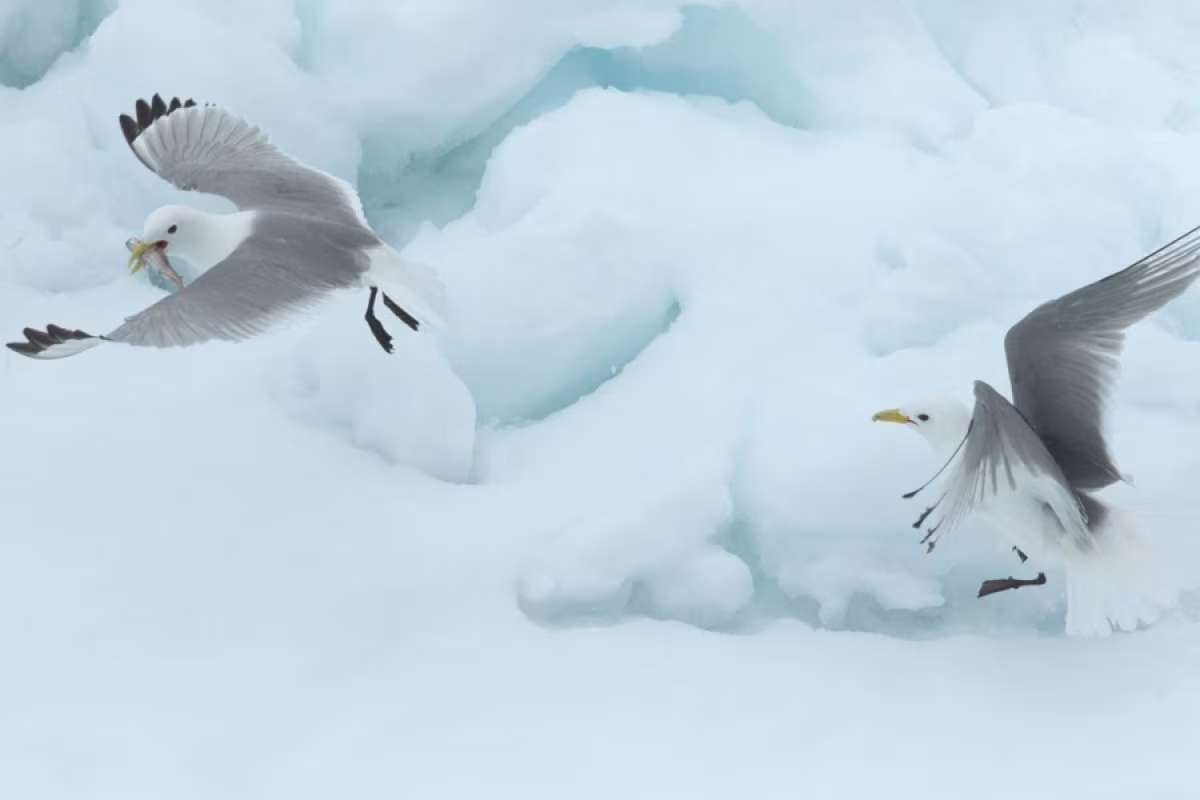
Are Kittiwakes social?
Kittiwakes will build nests near each other on cliff ledges, and will go to feed together in flocks. These colonies of cliff-side nests can number into the thousands.
What are Kittiwake mating rituals like?
Kittiwakes become sexually mature around 4 years of age. Nests are built from seaweed, other vegetation, feathers, barnacles, and mud on the ledges of steep cliffs. Nesting colonies can include thousands of mating pairs of adults. Both the male and female contribute to the building of the nest. 2 eggs are laid between the middle of May and June. The eggs are incubated for about 4 weeks. After the egg hatches the parents will switch off caring for the chick and flying out to sea to feed. Parents will store food in their crop (a pouch near the throat or gullet) then fly back and regurgitate it at the nest. Kittiwakes are finicky – food that misses the chick’s mouth to land on the nest will not be eaten, instead it will be plucked out of the nest and dropped down the side of the cliff. The chicks are able to fly when they’re about 5 weeks old.

How long do Kittiwakes live?
Kittiwakes live up to about 20 years old in the wild.
How many Kittiwakes are there today?
The worldwide population for all Kittiwakes is broken down to:
- Black-Legged Kittiwakes – 18,000,000
Do Kittiwakes have any natural predators?
Kittiwakes face very few natural predators due to their nests being positioned on the faces of steep cliffs. The Kittiwake population is vulnerable however to a season’s stock of fish.
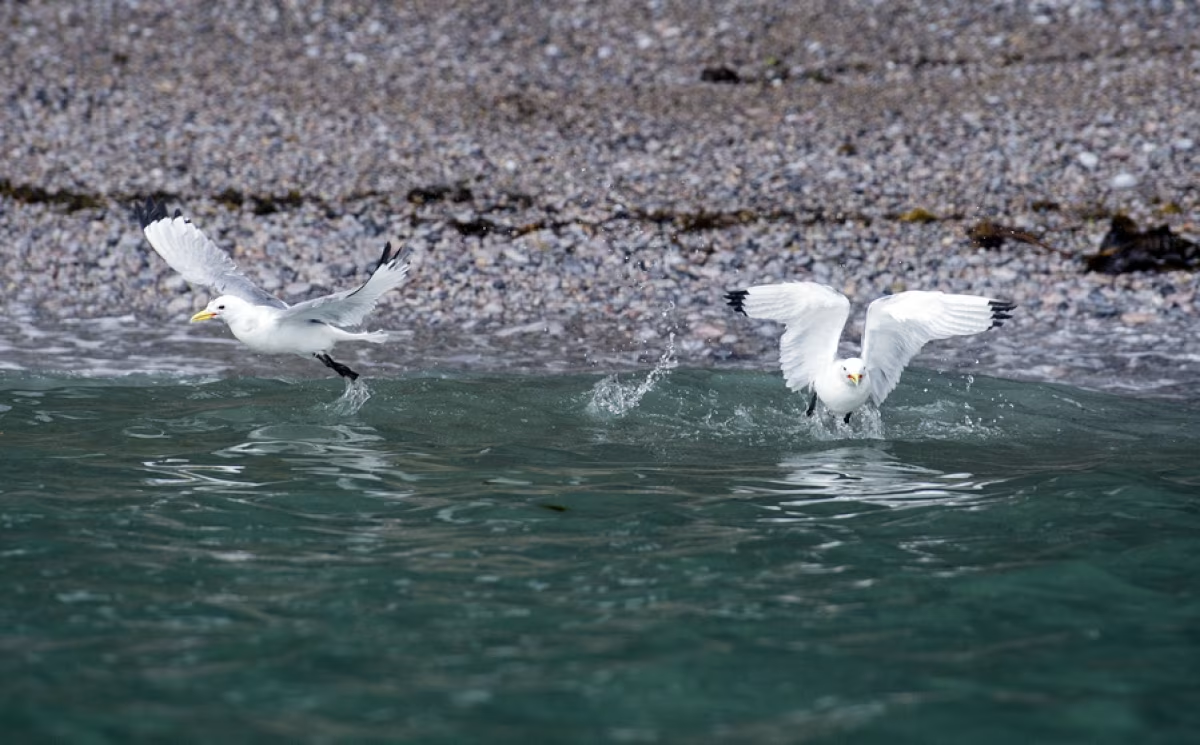
7 Cool Kittiwake Facts
- Kittiwakes get their common name from their calls – “kittee-wa-aaake!”
- Kittiwake chicks are one of the few chicks that are white at birth. Because of their remote nesting areas in cliffs they do not require camouflage like the chicks of other more vulnerable species.
- Kittiwake chicks instinctively know to stay still so they don’t fall from their cliff-side nests.
- Kittiwakes are the only gull-like bird in the world to make cliff dwellings.
- Both kinds of Kittiwake – the Black-Legged Kittiwake and the Red-Legged Kittiwake - are found in North America, but only the Black-Legged Kittiwake is found in Europe.
- The Black-Legged Kittiwake’s scientific name of tridactyla, which means “three-toes,” refers to the hind toe on its foot which is barely more than a bump.
- Kittiwakes are the most numerous type of Gull in the world.
